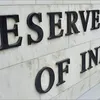RBI mandate on external benchmark rates is credit negative for banks: Moody's
The central bank has so far this year cut interest rate by 110 basis points but lenders have transmitted only a part of it to borrowers in the form of a lower cost of taking loans.

The Reserve Bank of India (RBI) mandating banks to link certain loans to the external benchmark-based interest rate from October 1 is credit negative to the lenders as it will limit their flexibility in managing risks, said Moody's Investors Service on Tuesday.
Last week, the RBI had stated that banks are not satisfactorily transferring the cuts in policy interest rates to borrowers, and it asked lenders to mandatorily link all new floating rate personal or retail loans and floating rate loans to micro, small and medium enterprises (MSMEs) to an external benchmark.
The central bank has so far this year cut interest rate by 110 basis points but lenders have transmitted only a part of it to borrowers in the form of a lower cost of taking loans.
"This is credit negative for India's banks as it will limit their flexibility in managing interest rate risk," Moody's said in a statement.
This new external reference rate could either be the repo rate, three-month or six-month treasury bills, or any other benchmark market interest rate published by Financial Benchmark India Pvt Ltd, an entity that administers benchmark rates.
Banks will be free to decide the spread over the external benchmark. Subsequently, credit risk premiums may undergo change when a borrower's credit assessment also undergoes a substantial change, as agreed upon in the loan contract, Moody's said.
Furthermore, other components of spreads, including operating costs, can be altered once every three years.
It said banks currently benchmark floating rate loans against the marginal cost of funds-based lending rates (MCLR). With changes in lending rates aligned to changes in the cost of funding, banks are able to mitigate their interest rate risk.
"Under the new rules, this direct linkage between lending rates and funding costs will no longer exist. This will expose banks to asymmetrical movements in the cost of funding and loan yields, thus exposing them to interest rate risks," it said.
Moody's said that under the new regime, while the floating-rate loan book will get re-priced, only the non-CASA (current and savings accounts) deposits will see a re-pricing on deposits.
"This will cause volatility to banks' net interest margins (NIMs), with NIMs rising when interest rates increase and declining when interest rates fall. This volatility in NIMs will translate into volatility in the overall profitability of banks," it said.
Also, the lack of a single benchmark that can consistently and accurately capture the movement of interest rates in the economy will also cause volatility to banks' NIMs, according to Moody's Benchmark selection will be difficult and will cause inherent volatility to banks' NIMs, it said.
"Banks' funding requirements are dynamic. There are periods when a particular bank's funding needs are high and it will readily pay higher than market rates, and vice versa. The new rules will impede the ability of banks to reflect such changes in funding costs of their lending rates as these will be linked to an external benchmark," it said.
The new rules will be applicable only to new personal, retail and MSME loans. Therefore, the near-term impact will be mitigated as new loans will be a relatively small portion of banks' loan books to begin with.
However, over time, most of the retail and MSME loans will transition to the new mechanism, Moody's said, adding this mandate will affect all rated Indian banks, although in varying ways. For banks with strong deposit franchises, the volatility in interest rates in the economy will have a bigger impact. For banks with comparatively weaker deposit franchises, the volatility of their own funding costs will have a bigger impact.









